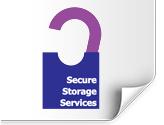Document Management Tips to Improve Office Organisation Back

In this post, we offer up several tips to help you improve your document management approach from a digital and non-digital perspective. Many of these tips are considered ‘high level’ rather than specific in nature.
We focus on helping you take the correct initial approach to vastly improving your office’s document management setup.
Many of these tips are merely considered ‘best practice’, and implement what follows will surely enhance the organisation of your documents.
Without further delay, we now offer you are top 6 document management tips:
1. Establish your goals for your document management system
Thousands of businesses waste countless hours of time and hundreds of thousands of pounds implementing document management systems because they neglect to establish goals. These goals should represent what you wish to achieve by implementing a document management system. If you do not establish these goals from the outset, you will have no idea whether or not your document management system is effective. These goals should specifically reflect the business application your document management system intends to address.
Some common business applications a document management system is to address include:
- To assist customers or staff members locate documents quicker
- To reduce the cost of storing important documents
- To improve collaboration amongst your team
These are just a few examples of common applications that document management systems may intend to address. The important point to remember is that it is vitally important for you to determine these goals before you begin to implement a document management system. You must then go about establishing metrics that help you effectively measure the achievement of these goals. These metrics are often termed ‘key performance indicators’ (KPIs). These metrics typically include the cost of document storage and the time it takes to locate a document or to process an action related to a document or class of documents.
2. Establish process automation
The vast majority of document management systems will include a significant digital component. Digital document management allows you to automate a substantial amount of tasks that hitherto took a lot of time to implement. Automation should also help to support the goals you have established from the outset. Goal setting for document management purposes is explored in point 1 above.
Automation helps you speed up the document management process. As a rule of thumb, you want to minimise the number of actions related to the completion of a document management goal. You will wish to automate tasks that prompt users to complete a certain action that’s tied to a goal. You will also want to establish metrics that measure the effectiveness of automation. Again, these goals are typically related to money and time savings.
3. Eliminate initial paper-based collection of data if necessary
It is always preferable to eliminate the initial paper-based collection of data. Doing so saves time and money, and also improves data accuracy. One way to implement this is to invest in virtual printers and electronic forms. This all-but removes the requirement to conduct timely and costly manual data entry.
4. Make improvements to paper-based data capture processes
If you cannot eliminate paper-based collection of data, it’s important to focus your efforts on improving efficiency in this area. When implementing digital processes, it is also important to challenge paper-based processes and try to improve upon them. Do not merely replicate paper-based process digitally in rote fashion. Attempting to improve upon paper-based processes will allow you to eliminate many steps that are simply rendered obsolete by digital technological improvements.
5. Streamline indexing with business needs
Indexing digital documents refer to the practice of organising data in meaningful ways. Indexing digital data allows you to achieve metrics that support your established goals, such as saving money and saving on the amount of time it takes to retrieve data. When indexing documents, it’s important to only choose to include fields that are necessary for supporting your business needs. Choosing to index too many fields of data will significantly increase the amount of time it takes to process and retrieve important data. Follow this general rule: if data is not absolutely essential, cut it out!
6. Simplify the user interface
When you have your custom document management system designed, it’s essential that users do not struggle to navigate around the system. If users do struggle to get to grips with your new document management system, you will likely fail to meet the initial goals you established from the outset. One common problem with document management systems is that they attempt to solve too many diverse problems. Instead, have your document management system designed so that the main focus is on allowing users to achieve the goals you set out above. Simplifying the document management system will allow users to fulfil their tasks without undue confusion and overwhelm.
Conclusion
We hope you enjoyed reading this post outlining document management tips. We hope these tips either help you to improve your current setup, or help you create a more effective document manage setup from scratch. If you require more bespoke advice for your business, contact Secure Storage Services today on 0151 293 4000. Alternatively, contact us through this website. We assist businesses with document management, document storage, document scanning and document shredding.


 Based in Liverpool and Wirral, we provide document storage, scanning and shredding services nationwide.
Based in Liverpool and Wirral, we provide document storage, scanning and shredding services nationwide.

